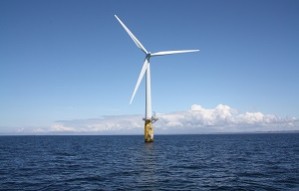
The original study in budget period 1 used a 3MW Hywind system and focused on design and analysis, turbine size-up scaling, the mooring system, instrumentation, data acquisition, and economic analysis. During budget period 2, the focus shifted to a 6MW Hywind system and included design and analysis, wake modeling, and geo-spatio-economic assessment.
Using Statoil’s 6MW turbine design and control algorithm, NREL built a model of the same size in FASTv7. The researchers investigated four design load cases: power production, power production plus occurrence of fault, parked (standstill or idling), and parked plus fault conditions. This work found limiting loads for all of the studied cases for the Hywind technology.
The wake modeling portion of the study focused on how the wakes of multiple turbines in an array affect the fatigue loads on downstream turbines. NREL used the FAST7 model built for the design and analysis work package with NREL’s high-fidelity simulation tool, Simulator fOr Wind Farm Applications. The researchers found that the effect of wake-generated turbulence on the fatigue loads on turbines’ mooring lines persisted even at 10 rotor diameters downstream, whereas the load intensities for the turbine blades and the tower decayed with the wake. In addition, researchers used a reduced-order model for wind plant optimisation to investigate optimally fixed yaw angles for a 10-by-10 turbine array with 7-rotor-diameter spacing and discovered a 2.4% improvement in overall power generation based on a mean hub-height wind speed of 8 meters per second.
NREL also conducted a national economic analysis for Statoil to provide them with information to help understand the market for the Hywind technology in the United States. The analysis used a new geo-spatio-economic methodology that NREL developed to assess how resource variability in different water depths can influence the levelized cost of energy for different offshore wind technologies. The results of the analysis suggest that there are many suitable U.S. locations where Hywind technology could be deployed.